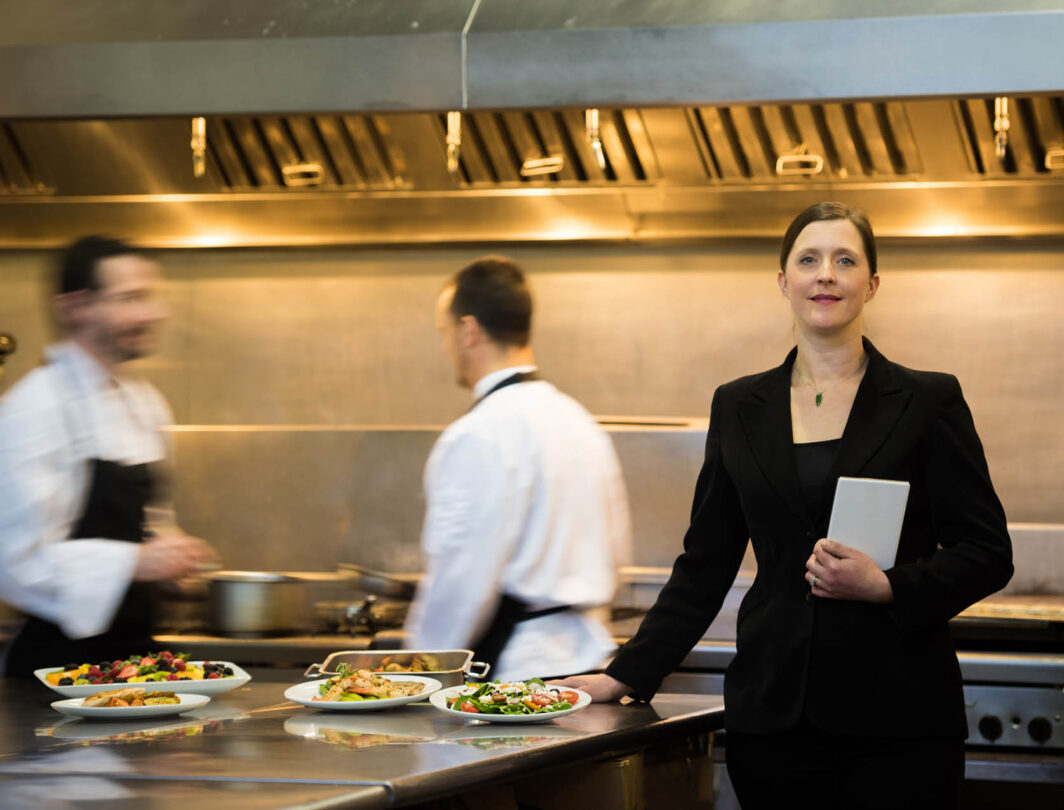Money Matters
How restaurant financial reporting can be improved by digital transformation
By driving digital transformation, restaurant chain CFOs can improve financial reporting and secure a competitive advantage.

The restaurant sector is facing serious challenges but forward-thinking companies are making the most of digital transformation to improve their financial reporting and other business processes.
Startups in the restaurant and food and beverage sector such as Deliveroo have used tech from their inception to improve the way in which they connect with their customers and their employees as well as making the financial processes faster and more accurate.
These newcomers are fusing human needs with the opportunities presented by technology. Other larger and longer established players are also embracing digital technology to improve their financial systems.
Starbucks, for instance, introduced an app that enables customers to order and pay from their phones. As well as being convenient for customers, it’s the kind of digital technology that can help speed up financial reporting and make it more accurate.
Ordering kiosks, mobile payments and handheld technology for your waiting staff can create a better experience for your customers while transmitting the latest financial information to the correct destination in an instant.
This gives your finance department staff an immediate picture of the current financial situation.
Restaurants that use digital signage have the capacity to change menus – and prices – instantly without printing and distribution costs to respond to the availability of products, the popularity of a particular dish and the price of raw materials.
However, this tech-first approach is not as easily available to all companies with a history that stretches back even a mere five years or more.
That said, those with a forward thinking, open-minded leadership team are already identifying possibilities for digital transformation to improve restaurant financial reporting and implementing these initiatives.
Finance department taking the lead
The finance department can and should be the driving force here, argues Sabby Gill, managing director, UK and Ireland, at Sage: “Today’s CFO is transforming into a real-time analyst. Tomorrow’s CFO will be a visionary. This is CFO 3.0.”
According to recent research by Sage as part of its CFO 3.0: Digital transformation beyond financial management report, six in 10 financial decision makers in medium-sized businesses are driving digital transformation in their organisation.
If you’re a CFO for a medium-sized restaurant chain, like many other finance leaders, you’ll find yourself having to do more with less. You’ll almost certainly find yourself looking forwards to help the board make the right decisions, rather than solely reporting on what has happened.
According to Sage’s survey, almost all of the financial decision makers asked (94%) report that their role has expanded over the past five years and is no longer just about fiscal responsibility.
According to just over half of those surveyed (51%), thinking of new ways to help the business with financial matters is the most challenging aspect of their job.
The CFO 3.0 challenge
Take the CFO 3.0 challenge to reveal the key findings from our research and discover if you can truly call yourself a visionary.

Overcoming the challenge of dealing with data
The need to act fast to meet changing customer needs, to drive down costs to handle the uncertainties of a rapidly evolving market, are matched by the challenges of high business rates and frequent amendments to taxation and financial regulations.
A vast increase in data is available to help here. However, in the restaurant industry, as with other sectors, finance departments are all too often overwhelmed by the amount of data that they receive.
Almost half (49%) of the finance leaders recently interviewed by EY reported that they “spend more time gathering and processing data than they do analysing it”.
This is where artificial intelligence (AI) and machine learning can help.
By identifying patterns and reducing the time spent by finance teams on simple, repetitive tasks, they can be freed up to analyse the data in a more nuanced, creative way.
More generally, technology such as robotic process automation (RPA) combined with machine learning can drive efficiencies and save time in financial reporting.
Imagine, for instance, you’re negotiating and arranging financing for a new lease for a restaurant. According to EY, AI tools can review about 70% to 80% of the content of a standard lease contract.
The time saved by automation and other aspects of digital transformation can enable finance teams to focus on data-driven reporting insight, thereby turning data into an asset.
You can use this data to identify new sites for openings, model changes in food and other raw material prices, and explore the impact on margins of new menu options.
However, according to findings from Sage, although 87% of those surveyed are comfortable with using automation for daily accounting tasks, nearly two thirds (63%) believe their businesses are not yet culturally ready for more automation.
Highlighting the benefits of digital transformation
CFOs and finance leaders clearly have a job to explain the benefits of technology and digital transformation to their staff and to persuade them that these innovations are not just about reducing head count.
As the CFO, you’ll need to show your team and others that they can act as drivers for exciting innovation. This can not only make them better at their jobs but also remove the kind of monotonous tasks, with a considerable risk of error, that most staff dislike.
EY found that nearly three quarters (72%) of those asked said expertise in AI and other aspects of digital transformation will be key to driving innovation in their departments over the next few years.
Restaurant groups, like other businesses, can use more accurate data to work more effectively with the managed service providers who support their IT departments.
Tax and regulations
As with every business, restaurant finance leaders have to consider how to minimise tax and to ensure the company is fully compliant but doesn’t pay more than it has to.
“A modernised tax function has the digital tools and talent to churn through scores or even hundreds of scenario models to determine their after-tax financial implications,” notes Deloitte in its report Tax in a Digital World.
Digital tools can help you to improve the timeliness of your operations as real time financial information is subjected to the latest tax laws and regulations.
This enables you to measure at any particular point in time elements such as profitability and tax liabilities as well as new cost drivers. As a result, you be more proactive, identifying problems with cash flow, for instance, before they occur and taking action to head them off.
As well as reducing the amount of time your employees spend on simple tasks, increasing digitisation and automation can also reduce the speed of processes and increase their accuracy.
In its report, Digital transformation in finance functions: ASEAN and UK perspectives, the ICAEW quotes the example of a restaurant chain that operates in an airport. The company handles meal voucher claims from passengers suffering delays.
The introduction of a scanning system meant employees could automatically rather than manually collect details from the boarding passes of customers. As well as streamlining and speeding up processes with more timely and standardised data, it also reduced the instances of human error.
Using technology to manage restaurant financial reporting
Even if some aspects of digital transformation sound complex or ambitious, as a restaurant chain CFO, you can still use a financial management system to oversee and govern many of your day-to-day transactions.
There is a growing number of restaurant accounting software packages. Most of them are cloud based, which provides you with greater flexibility around data storage and means anyone with the correct authority can access the information, whether they’re in the office, in a restaurant or out on the road.
The simple business of producing bills for customers and then handling payments can be faster, more streamlined and more accurate with the right financial management systems and accounting software.
Keeping track of shifts worked by your kitchen and waiting staff as well as your managers can be easier and less time consuming. In addition, it can handle your food and drink inventory, general accounting, cash flow, budgeting, forecasting and scheduling of orders.
In the case of restaurants where there are large volumes of transactions, smart reconciliation tools that predict matches and allow you to reconcile in batches can really save time.
In addition to this, a fixed asset management tool will allow you to calculate the depreciation of your assets such as kitchen machinery, restaurant furniture and delivery vehicles, as well as the more common items such as computers and terminals.
Providing accurate and effective restaurant financial reporting in an industry as fast moving and competitive as this sector is a constant challenge. Added to this is the emergence of new, disruptive entrants to the market that work on a tech-first basis.
However, as a forward-thinking CFO working in a restaurant chain, you have a growing suite of technology products at your disposal that can improve the experience of your customers and your employees, as well as improve your financial reporting.
Finding the right technology partner and working closely with them to choose the right products is key to driving the kind of digital transformation that can give your restaurant chain a competitive advantage and secure its future.
CFO 3.0: Digital transformation beyond financial management
Discover how CFOs are playing a key role in leading the digitalisation of medium-sized businesses and learn how to move from a 'historian' to a 'visionary' within your business.







Ask the author a question or share your advice